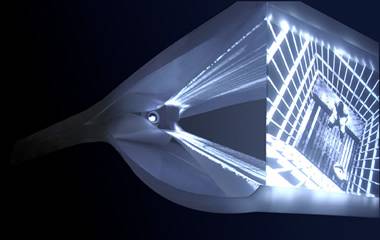Dark Places
21 Jan - 22 Apr 2006
January 21 - April 22, 2006
Guest curator: Joshua Decter
Exhibition Design: servo
Participants:
Acconci Studio
Franz Ackermann
Francis Alÿs
Michael Ashkin
Jaime Ávila Ferrer
Dennis Balk
Matthew Barney
Judith Barry
Thomas Bayrle
Julie Becker
Douglas Blau
Monica Bonvicini
Daniel Bozhkov
Mark Bradford
Miguel Rio Branco
Troy Brauntuch
Candice Breitz
François Bucher
Sophie Calle
Eduardo Consuegra
Jordan Crandall
Teddy Cruz
Jonas Dahlberg
Stephen Dean
Anne Deleporte
Diller + Scofidio
Sam Durant
Anna Gaskell
Douglas Gordon
gruppo A12
Fariba Hajamadi
Pablo Helguera
Noritoshi Hirakawa
Julian Hoeber
Emily Jacir
Christian Jankowski
Vincent Johnson
Mitchell Kane
Joachim Koester
Glenn Ligon
Dorit Margreiter
Fiorenza Menini
John Miller
Muntadas
Paul Myoda
Yoshua Okon
Catherine Opie
Lucy Orta
Hirsch Perlman
Raymond Pettibon
Richard Phillips
Richard Prince
Raqs Media Collective
Alexis Rockman
Julian Rosefeldt
Aura Rosenberg
Peter Rostovsky
Sam Samore
Paige Sarlin
Julia Scher
Gregor Schneider
Allan Sekula
Andres Serrano
Nedko Solakov
Doron Solomons
Wolfgang Staehle
Javier Téllez
Anton Vidokle
Eyal Weizman/Nadav Harel
James Welling
Wim Wenders
Judi Werthein
Charlie White
Måns Wrange
Jody Zellen
Heimo Zobernig
From January 21 to April 22, 2006, Santa Monica Museum of Art presents Dark Places, guest curated by Joshua Decter, with a pioneering installation design by the architectural collective servo. Traces—phantom memories—often inscribe narratives that warp our perception of historical places and events. Dark Places explores the subtle interconnections between memory and social space, and the possibility that traces of events are scripted into the fabric of our physical and psychological environment. Uniquely formatted and designed, this large-scale group exhibition brings together a diversity of artistic visions to reconsider how we navigate urban, suburban, and other kinds of territories on bodily, perceptual, political, psychological, and ideological levels.
The exhibition asks: what, and where, are the enigmatic places in our urban and suburban worlds? How do we steer through ambiguous social space? How do we experience the historical traces of disturbing events within our homes, neighborhoods, and cities? What are the atmospheric, psychological, and political conditions that define our built environment? Is it possible to create narratives, or invent systems, to help us traverse anxious or threatening social, personal, and political situations? In this era of homeland security, do new technological methods for mapping the patterns of crime and violence—satellite imaging, geographic information systems, real-time video surveillance, web-based interactive cartography—threaten to impinge upon our civil liberties and privacy? And how might we re-appropriate these technologies to achieve socially and politically positive results?
Decter has invited a particular group of artists from varied cultural backgrounds to respond to these issues by producing either a new work, or selecting an extant work to be recontextualized within the exhibition. Dark Places brings an alternative, experimental approach to the organization and installation of the group exhibition. Designed by servo, an innovative architectural collective, it features a pioneering exhibition design that perfectly transmits Decter’s unique curatorial script of sequenced digitized artworks. A ceiling-mounted, spider-like, molded plastic armature equipped with four front projectors, four rear-view projectors, specially designed screens, and a network of fiber optics delivers a series of luminous images into the darkened museum space. Interpretive information about the artists and the works on view is accessed through four workstations positioned within the armature. The entire installation—which echoes and embodies the themes of the exhibition—provides an unprecedented interactive and animated viewing experience for museum visitors. With Dark Places, the Santa Monica Museum of Art, takes a further step toward redefining the ways that art can enhance and transform our perceptions and our lives. The exhibition is accompanied by an illustrated publication that includes an essay by exhibition curator Joshua Decter and a statement of purpose by servo partner David Erdman.
Joshua Decter is a New York-based art and architectural historian, curator, critic, and educator. His curatorial projects include Tele[visions] (Kunsthalle Vienna, 2001–02); Transmute (The Museum of Contemporary Art, Chicago, 1999); Heaven: Public View/Private View (PS1, 1998); and a/drift (The Center for Curatorial Studies Museum, Bard, 1997). In addition to being published in The New York Times, The Village Voice, Art News, Artforum, Flash Art, Art Monthly, and Beaux Arts, Decter has contributed essays to exhibition catalogs for a wide range of distinguished institutions in the United States and abroad. Decter is a member of the Art History Faculty of the School of Visual Arts in New York, The School of the Art Institute of Chicago, and he is visiting faculty at the Center for Curatorial Studies Graduate Program at Bard College.
Established in 1999 and based in Los Angeles, servo - www.s-e-r-v-o.com - experiments with emergent design, fabrication, and interactive information technologies that focus on the complex interface of emerging media and architectural practice. The principal partners in servo are David Erdman, Marcelyn Gow, Chris Perry, and Ulrika Karlsson. An international network decentralized across four cities that links the architecture cultures of Europe and the U.S., Servo borrows its name from an apparatus common in the field of cybernetics. Servo resembles a kind of culture of information, a macro-organism of individual and collective agents, which assume a variety of shifting organizational and formal identities over time and distance, emergent and improvisational in nature. Servo has been featured in the Venice Biennale 2003; New Hotels for Global Nomads (The Cooper-Hewitt National Design Museum, 2002); and the 2002 International Artist Studio Program.
www.smmoa.org
Image:
Dark Places display prototype designed by servo
2005
Vacuum-formed plastic, projector
24 inches x 24 inches x 14 feet

